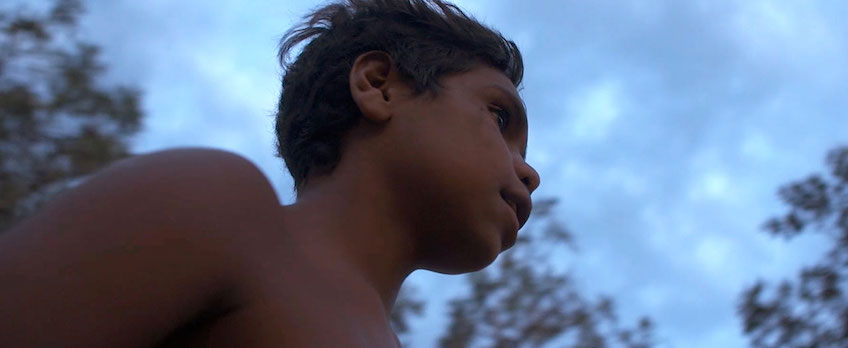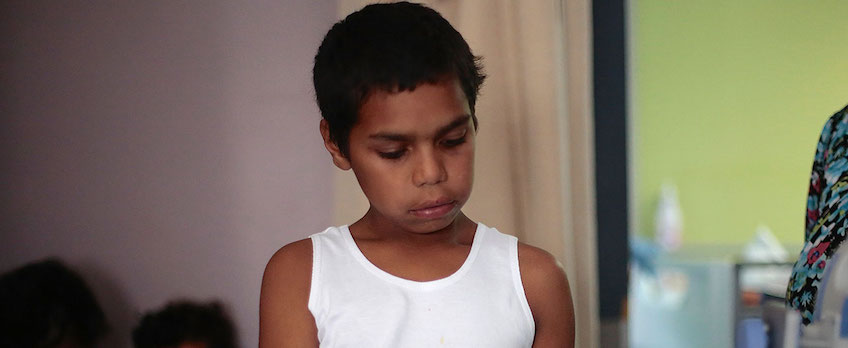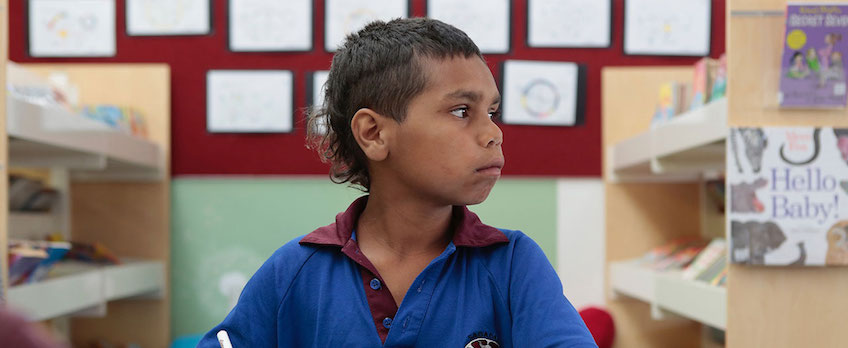Interested in writing for our blog? Send your pitches to editor@miff.com.au.
In My Blood It Runs: An Interview with Maya Newell

Maya Newell’s powerful new documentary In My Blood It Runs captures vast systemic injustice through the eyes of 10-year-old Arrernte boy Dujuan Hoosan. Although Dujuan knows three languages, acts as a healer and ruminates poetically on the history of his people, he is labelled a lost cause by an education system designed by his colonisers. At such a young age, Dujuan is already contending with the threat of juvenile detention – which in the Northern Territory, features an overrepresentation of Indigenous children.
Peppering in Dujuan’s personal reflections and moments of filmic experimentation, Newell seeks to create a social impact through a strong collaborative voice: the push for a First Nations-led education system and necessary prison reform thrums beneath every frame.
With the help of organisations Akeyulerrre and Children's Ground, the film champions a revolution in Australian education. 2019 Critics Campus participant Claire Cao spoke to Maya about collaborating with Dujuan, the politics of representation and a compelling Mormon subplot that was cut from the film.

From In My Blood It Runs
The film is so rooted in Dujuan’s perspective; the camera is constantly level with him and we move through spaces with him so intimately. Can you could speak about the process of collaboration between you two?
You've got lots of amazing people working on this project facilitating this relationship: its elders, grandparents, advisors, local organisations. But a lot of the time, it was just me and Dujuan hanging out. He’s a kid who really likes to be in control, to be learning and to have power in all of the scenarios we were filming. I probably have a few hours of footage where he’s interviewing me!
It was a beautiful process getting to know him and letting him lead and show me his world. That's what I love about documentary filmmaking. It always involves a deep curiosity about other people's lives and forges a relationship that will continue long after the film is released.
You had a personal connection to your previous documentary Gayby Baby (MIFF 2015), as you were raised by gay parents like the subjects. What were the unique sets of challenges that came with making In My Blood It Runs where you were an outsider?
[Making Gayby Baby], I spent a lot of time thinking about politics of representation, and the importance that those who are in front of the camera have control of the way they are portrayed. That is particularly important for marginalised communities and individuals who have experienced a lack of power around their stories.
Many communities like mine with gay families are victims of serious mainstream media campaigns, which have actively dehumanised people and essentially allowed politicians to make laws that discriminate against them.
Coming into In My Blood It Runs, I was aware of the misappropriation of First Nations stories and really questioned whether I should make the film. The only way we as a team [which consists of both Indigenous and non-Indigenous peoples] felt comfortable was through building this structure that allowed families to have a say. Consent was ongoing; they had creative control all the way through. Dujuan could pull out whenever he wanted and he was a part of the storytelling.

From In My Blood It Runs
You’ve captured the way Australian schools designed for Indigenous children strictly impose Western methods of teaching. Were any of the teachers were aware of the goals of your documentary – especially as some are deeply dismissive of Indigenous culture?
We captured some very uncomfortable truths about the education system. I didn't film for a long time in those schools so it's not like we filmed lots of footage and cherry-picked the worst parts. It’s telling that those are some of the lessons that teachers felt comfortable for me to film.
But I also want to note that schools can also be the bedrock of stability; they're places where kids get fed and where kids can feel safe. A wonderful thing that's happened at Dujuan’s second school is that, when the new principal watched our film, he was very positive about it and will be using the film to support getting rid of a particularly problematic model of education called “direct instruction.”
This can be seen in the scenes where the teachers are clicking their fingers and demanding children to respond – a rote learning style from the United States that was only imported into Aboriginal schools in the Territory.
The film isn’t out to demonise any teacher and school. In actual fact, it requires teachers to watch, collaborate and be open to change.
In the editing process, did you lose any stories that you felt strongly about?
I could probably go back and cut a number of short films from the footage on the cutting room floor! One of my favourite storylines was about religion; it followed Dujuan’s developing cognisance about the role of religion versus his power as an Aboriginal child and how those two things were weighing inside of him.
The Mormons regularly come and visit Hidden Valley and Megan lets them come in because they sweep her yard and clean up her house. Dujuan asked a very astute question to the father of this group: “Who’s more powerful, Aboriginal people or God?”